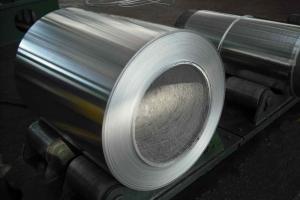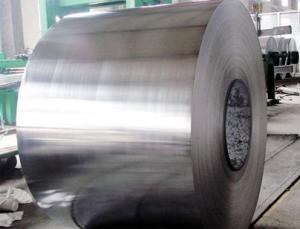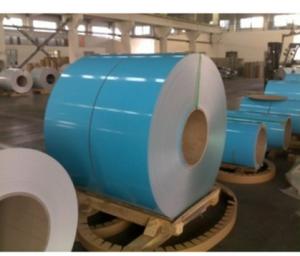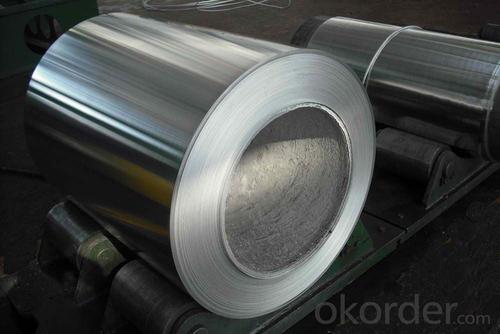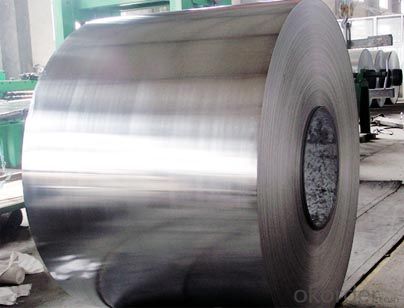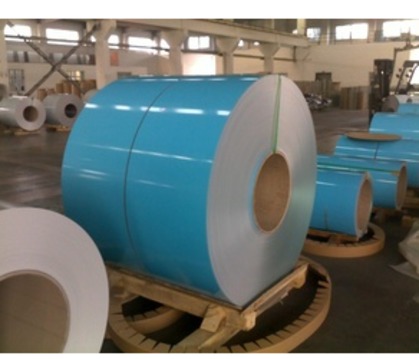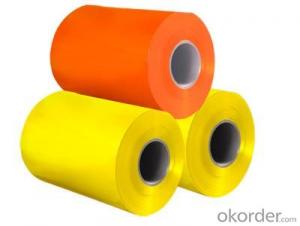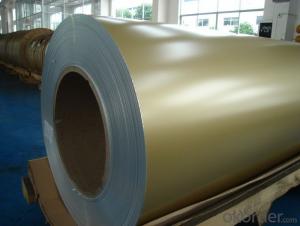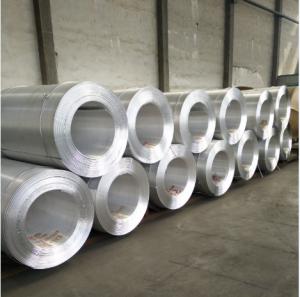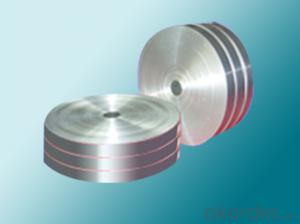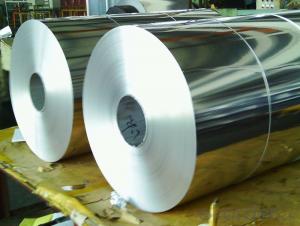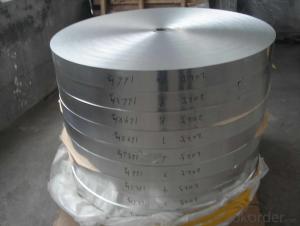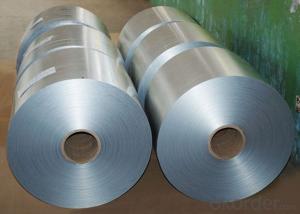5754 H14 H22 Aluminum Coil Manufacturers
- Loading Port:
- Shanghai
- Payment Terms:
- TT or LC
- Min Order Qty:
- 5 m.t.
- Supply Capability:
- 9000 m.t./month
OKorder Service Pledge
OKorder Financial Service
You Might Also Like
Product Description
Aluminum coil manufacturers
Temper: O H12/ H14/24 H16/26 H18 H19
Thickness: 0.20-3.0mm
Width: 16-1600mm
Usage: capacitor strip, aluminum plastic composite material, car parts, building decoration materials, stamping products, building mirror materials, nameplate, insulation materials, container package, welding parts, clock surface and disk, kitchen utensils, reflecting apparatus etc.
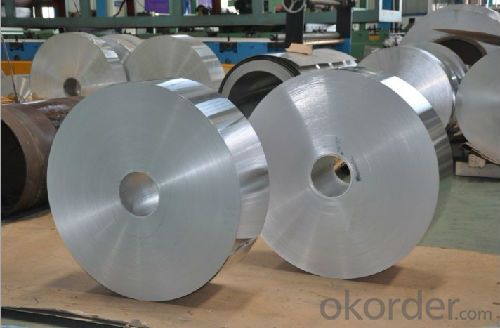
Application
Machine,auto, can, building, ship and so on.
Packaging & Shipping
Standard export seaworthy package or as cilents' requirement
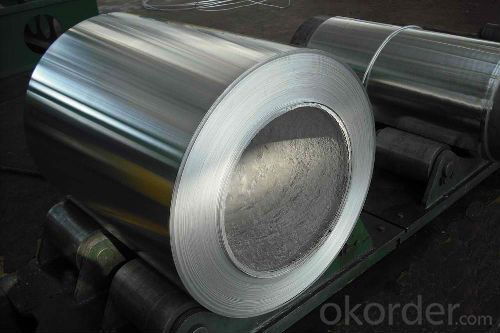
Company Information
Through the years, we have built many modern production lines, including one 1+2 hot rolling production line, six 2,450, 2,050, 1,650 and 1,450mm cold rolling lines, two 1,650mm foil rolling production lines, two 1,850mm continuous rolling production lines and one roll coating production line. Besides, we also bring in 8 x 20 annealing furnaces, tension leveled machines, tension pre-stretch machines, cutting machines, cleaning equipment, testing machines and packing equipment from at home and abroad to be able to complete various clients' requirements
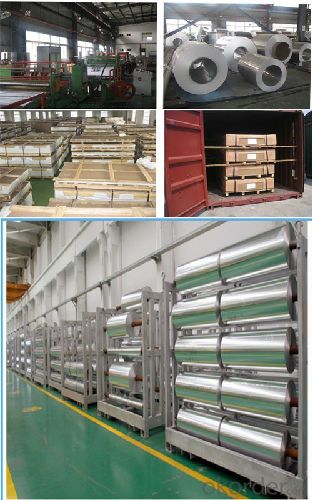
Colored aluminum sheet polyester coating is a UV protection coating; the polyester resin is the use of the main polymer chain of ester bond-containing monomer, adding an alkyd resin, an ultraviolet absorber and can be divided according to the glossiness matt and high-gloss series, especially for interior decoration and advertising boards.
Fluorocarbon colored aluminum sheet is fluorine eneyne fluorocarbon resin basic monomer, a pigment, ester solvents, additives, mixed together. After high temperature barbecue deposition, the molecular structure of the coating becomes tight, with superior weather resistance. According fluorocarbon coating film on the surface structure can be divided into two kinds of conventional fluorocarbon coating fluorocarbon nano. Especially suitable for public places, indoor and outdoor decoration, commercial chains, exhibition and display advertising and other decorative colored aluminum sheet
- Q: How are aluminum coils protected against mechanical damage?
- Aluminum coils are protected against mechanical damage through various methods such as applying protective coatings, using durable outer casings, employing edge guards, and ensuring proper handling during transportation and installation.
- Q: who invented aluminum and or aluminum foil?
- Scientists suspected that an unknown metal existed in alum as early as 1787, but they did not have a way to extract it until 1825. Hans Christian Oersted, a Danish chemist, was the first to produce tiny amounts of aluminum. During that time, the method to extract aluminum was so costly that aluminum once was considered more precious than gold. The plant, owned by J.G. Neher Sons (aluminum manufacturers) started in 1886 in Schaffhausen, Switzerland, at the foot of the Rhine Falls - capturing the falls’ energy to produce aluminum. Neher's sons together with Dr. Lauber discovered the endless rolling process and the use of aluminum foil as a protective barrier. From there began the wide use of aluminum foil in the packaging of chocolate bars and tobacco products. Processes evolved over time to include the use of print, color, lacquer, laminate and the embossing of the aluminum. Although the technology to extract aluminum improved greatly, it still is a energy extensive process. If you, as a chemist can figure out a way to reduce the amount of energy needed to extract aluminum even by 1%, your method can make you a millionaire overnight. There is a thought to motivate you to study Chem. =)
- Q: Is it safe and effective to heat an aluminum coil using a microwave oven?
- <p>No, you should not use a microwave to heat an aluminum coil. Microwaves can cause aluminum to heat unevenly and potentially spark, which is dangerous. Aluminum is a good conductor of electricity and can reflect microwaves, leading to arcing and fire hazards. Always use microwave-safe materials when heating food or other substances in a microwave.</p>
- Q: What are the different types of alloys used for aluminum coils?
- There are several types of alloys commonly used for aluminum coils, including 3003, 5052, and 6061. Each alloy has its own unique properties and applications in industries such as automotive, construction, and aerospace.
- Q: How much is aluminum-plastic panel with the 0.155mm thick aluminum per ton?
- The price is around 17000 yuan per ton, but you need to take the surface effect into account
- Q: How are aluminum coils installed in various applications?
- Aluminum coils are installed in various applications using different methods depending on specific requirements and the nature of the application. Here are a few commonly used methods for aluminum coil installation: 1. HVAC Systems: Aluminum coils are commonly used for heat transfer in HVAC systems. They are typically installed inside air handling or condensing units. Installation involves securing the coils, connecting them to refrigerant lines, and ensuring proper insulation and sealing to prevent leaks. 2. Refrigeration: Aluminum coils are used for heat transfer and cooling in refrigeration systems. They are usually installed within evaporator or condenser units. The installation process includes securely mounting the coils, connecting them to refrigerant lines, and ensuring proper insulation and sealing. 3. Heat Exchangers: Aluminum coils are widely used in heat exchangers for various industrial applications. They are installed within shell and tube or plate and frame heat exchanger units. Installation involves positioning the coils, connecting them to piping and fittings, and ensuring proper alignment and sealing. 4. Automotive Radiators: Aluminum coils are extensively used in automotive radiators for efficient heat dissipation. Installation involves mounting the coils within the radiator assembly, connecting them to coolant lines, and ensuring proper alignment and sealing to prevent leakage. 5. Electrical Transformers: Aluminum coils are used for efficient power transmission and electrical insulation in electrical transformers. Installation involves winding the coils around the transformer core, connecting them to terminals, and ensuring proper insulation and grounding. In all these applications, it is essential to adhere to industry standards and guidelines to achieve proper aluminum coil installation. This includes considering factors such as structural support, alignment, connection integrity, insulation, and sealing to ensure optimal performance and longevity.
- Q: I'm trying to cast aluminum using plaster and i was wondering if any one know how much the plaster has to be baked and how to tell if the plaster is dried fully and ways to do it. thx
- Plaster releases water at two points - in ordinary or accelerated drying it loses the water needed for setting and stops feeling cool and feels dry. If it is heated past 900F it loses chemically bound water and may fall apart. Aluminum melts at several hundred degrees higher than this and if the mold is intended to hold a mass of aluminum is is likely to destroy the mold. If the aluminum casting is fairly flat less of a problem. The common method for dealing with this is to add 50% silica flour (bad for lungs warning) to the dry plaster when making the mold. Then the mixed material mold can be used and preheated to take materials at least up to fused/molten glass, although the mold is commonly lost (not reusable) at these temps and just barely holds together.
- Q: Are aluminum coils suitable for electrical transformers?
- Yes, aluminum coils are suitable for electrical transformers. They have several advantages, including lower cost, lighter weight, and better thermal conductivity compared to copper coils. Additionally, aluminum coils have been widely used in power transformers, demonstrating their suitability for this application.
- Q: Describe the different methods used to produce aluminum coils.
- <p>Aluminum coil is produced through several methods, primarily involving the process of rolling. The main methods include: 1) Hot rolling, where aluminum slabs are heated and rolled into coils at high temperatures. 2) Cold rolling, which involves rolling aluminum at room temperature to achieve thinner gauges with higher precision. 3) Continuous casting and rolling, a process where aluminum is cast and rolled in one continuous operation, optimizing production efficiency. 4) Twin-roll casting, a method where molten aluminum is cast directly between two counter-rotating rolls, forming a thin strip that can be coiled immediately. Each method has its advantages and is chosen based on the desired coil properties, thickness, and application.</p>
- Q: What are the different types of edge conditions for aluminum coils?
- There are several types of edge conditions for aluminum coils, including slit edge, mill edge, deburred edge, round edge, and beveled edge. Each type has specific characteristics and is used for different applications in industries such as construction, automotive, and aerospace.
Send your message to us
5754 H14 H22 Aluminum Coil Manufacturers
- Loading Port:
- Shanghai
- Payment Terms:
- TT or LC
- Min Order Qty:
- 5 m.t.
- Supply Capability:
- 9000 m.t./month
OKorder Service Pledge
OKorder Financial Service
Similar products
Hot products
Hot Searches
Related keywords
